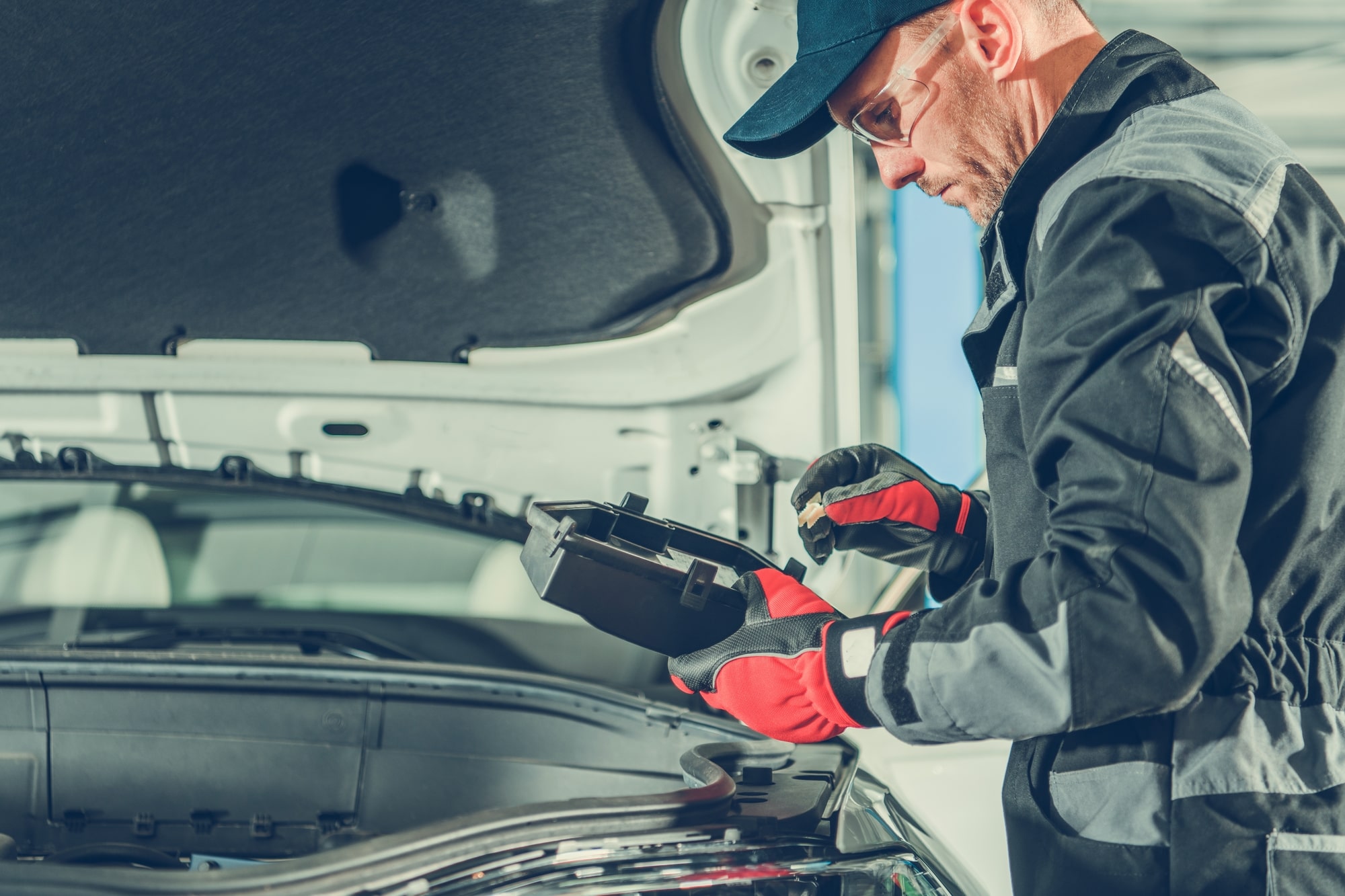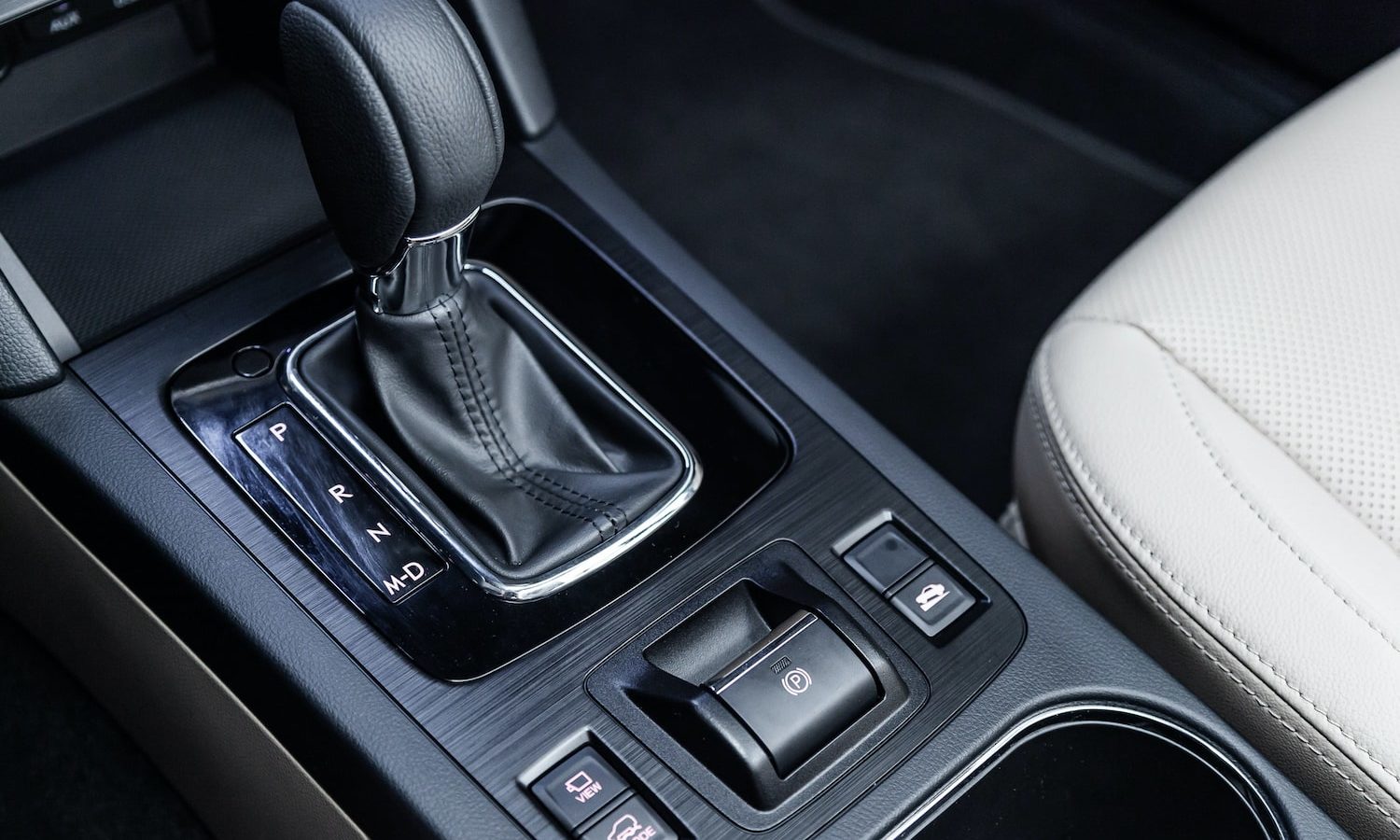Your car’s transmission is one of its most critical—and expensive—components. That’s because, without a properly working transmission, your vehicle won’t move. And replacing it can cost you thousands of dollars. In fact, according to RepairPal, the average cost for transmission replacement falls between $4,830 and $5,023. Therefore, having a clear understanding of how your transmission functions and what to look for when something goes wrong is necessary to keep your car running well.
What Does a Car Transmission Do?
The purpose of a transmission is to ensure your car’s wheels are correctly powered when driving. This major car component moves the power your engine produces to the wheels. That’s because as you increase or decrease your speed, the transmission adjusts the gear ratio between the drive wheels and engine accordingly so that your vehicle doesn’t overheat.
However, not all transmissions are the same, as your vehicle can have one of four main types:
- Manual: Also known as a “stick shift,” a manual transmission requires you to push down the clutch pedal and select the right gear with the shifter. You then release the clutch to re-engage the engine and transmission. Overall, manual transmissions are more reliable and are cheaper to repair.
- Automatic: An automatic transmission is the most commonly found in vehicles today. It uses a torque converter to connect the engine and the gearbox, allowing for a more effortless driver experience. However, repairs can be more expensive because the system is more complex.
- Continuously variable transmission (CVT): The CVT alternative transmission is the most fuel-efficient and uses a series of belts and pulleys.
- Semi-automatic and dual-clutch transmissions: Instead of changing gears with a stick shift, a semi-automatic transmission requires you to use paddles. Additionally, a dual-clutch transmission is similar to the semi-automatic, but it has two clutches and changes gears automatically.
What Should I Do to Maintain My Transmission?
Vehicle maintenance is not something you can ignore, especially when it comes to your transmission. Eventually, it will catch up with you and lead to a hefty repair bill. One way to stay on top of it is by keeping a car maintenance log to know what services you need to perform and when.
Consider the following upkeep that is necessary to support your transmission’s overall functions:
- Change the fluid: You might need to replace the transmission fluid as you get close to the 100,000-mile mark if you own a newer vehicle. However, the time—and cost—will vary between cars. For instance, some car and truck owners will need to replace the transmission fluid closer to 30,000 miles. It all depends on your vehicle’s make and model, age, and mileage. Therefore if you own an older, high-mileage vehicle, keep this service in mind. Failing to keep up could result in a high repair bill. And changing the fluid is much cheaper than replacing the transmission altogether. Furthermore, be aware of the type of fluid your car takes. Some require conventional engine oil, while others take automatic transmission fluid.
- Get a transmission inspection: If you think you have transmission problems, take your car in for a check-up. Pending you drive a vehicle with a CVT, make sure to check your owner’s manual for inspection schedules and fluid change recommendations. Keep in mind your vehicle will require a CVT-specific fluid.
- Flush the transmission fluid when necessary: Whether your transmission is automatic or manual, the fluid’s job is to keep the car’s mechanical components cool and lubricated. But with time, the transmission’s interior components can deteriorate and cause fluid contamination. The best step you can take is to talk to your certified mechanic, who can check the transmission fluid and advise you on whether you need to have the fluid drained or flushed.

GET AN EXTENDED WARRANTY FOR YOUR CAR!
Want to protect yourself from pricey auto repairs?
Let us help you find the right extended car warranty company and coverage plan for your vehicle!
Get Pricing
How Can I Tell if I Have a Transmission Problem?
Not every transmission problem results in a pricey repair. But, ignoring the signs that something is wrong could lead to more significant issues down the road, as well as a higher bill. Let’s review a few signs indicating you might have a transmission problem:
Your check engine light turned on.
The illumination of your check engine light is an indication that something is wrong with your vehicle. While you may have a problem elsewhere, the light’s activation could mean your car is experiencing a transmission problem. If you own an OBD-II scanner, code reader, or similar device, conduct diagnostics using your smartphone or tablet and see what comes up. If you don’t own one, you will have to visit your auto repair shop for further examination.
Your vehicle is lagging.
When you shift your car to drive, and there’s a delay in its response, this may be a sign that you’re experiencing transmission problems. Instead of moving, your car pauses. This is a common problem that can happen over time.
You see signs of a fluid leak.
Transmission fluid is generally red in color. So when you spot red liquid dripping from your vehicle, it’s a strong indication that you have a transmission leak. If you notice a leak, schedule an appointment with your mechanic for further investigation as soon as possible.
You smell something burning.
Anytime you smell a burnt odor is a cause for concern. But it’s even more worrisome when the smell comes from your vehicle. Take your car to your mechanic ASAP if your transmission fluid smells burnt. It could mean your transmission is overheating.
How Do I Protect Myself From a Costly Transmission Repair?
One of the most proactive steps you can take to protect your vehicle from a transmission problem is to stay up-to-date with factory-recommended maintenance and inspections. Using a vehicle maintenance log, document the services and save the receipts. Not only can it save you on unnecessary maintenance, but a record will help you stay organized and support you when filing a warranty claim if and when the time comes.
Another step is acquiring a vehicle protection plan with transmission coverage. This is especially important if your car is no longer under factory warranty or your contract is set to expire soon. After all, you want to stay safe on the road and avoid high repair costs. Knowing you have a plan that covers you when the unexpected happens is excellent for your peace of mind and wallet.
Get the protection you need by first reviewing our extended warranty providers and requesting a free quote. For more information on finding the best extended warranty for your vehicle, start by checking out our top warranty programs, coverage comparisons, and protection program reviews.



